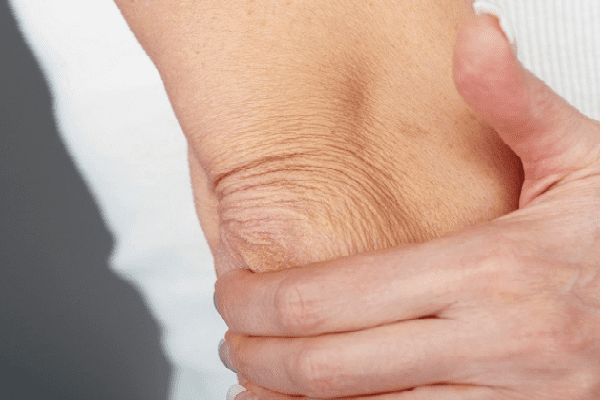Plastic surgery >>>> Sagging skin on knees or elbows - how to fix it?
Sagging skin on knees or elbows - how to fix it?

If the skin hangs on the knees or elbows, this is a consequence of a sharp weight loss, when a significant amount of subcutaneous fat disappears, and the skin does not have time to restore its original state due to overstretching (violation of the structure of elastane and collagen fibers).
It is possible to expect that in the near future the skin itself will return to its previous appearance if you are under 30 years old, when the regeneration processes of elastane and collagen fibers in the skin have not lost all their capabilities. And even before the age of thirty, the skin may not return to its previous size if weight loss is associated with very large weight loss, for example, after pregnancy complicated by edema, or as a result of treatment for morbid obesity, or as a result of endocrine fluctuations.
Cosmetology and plastic surgery offer several options for restoring saggy skin on the knees or elbows.
The least traumatic and, accordingly, less effective way to restore sagging skin in the knee or elbow area is thread lifting - skin reinforcement and tightening due to thread tension. This procedure does not require a thorough surgical intervention, is practically bloodless, and has a minimal rehabilitation period.

Reinforcing threads are a biochemical material that dissolves after a while, so there is no need to worry about the penetration of foreign materials into the thickness of the skin - the threads are perfectly combined with the natural structures of skin cells and imitate the work of collagen and elastane fibers - skin turgor. The disadvantage of this method of tightening sagging skin on the knees and elbows is a limited time period. Further, the tension of the skin will gradually return to its previous appearance.
A more challenging but also more effective way to remove sagging skin from knees and elbows is to remove a skin flap (excess of stretched skin). Surgical tightening of the skin on the knees and elbows removes excess skin from the knees and elbows permanently. But this kind of operation requires compliance with the doctor's instructions for the entire postoperative period:
- Refrain from gaining weight
- Build up the muscles in the knee or elbow area.
Rehabilitation after excision of excess skin in the area of the knees or elbows does not take more than one to two weeks, since the operation does not affect deeply-lying tissues. But during the rehabilitation period after surgery, physical exercises that load the knees or elbows are contraindicated, as well as massage procedures, spa procedures, saunas, and a solarium.
Contraindications to this type of plastic surgery of the skin of the knees and elbows are:
- Disorders of metabolic processes in the body (diabetes mellitus, persistent hormonal disorders);
- A history of autoimmune skin diseases (lupus erythematosus, scleroderma, psoriatic arthritis, rheumatoid arthritis, dermatomyositis, polymyositis),
- Keloid scarring of the skin,
- Reduced immune status.
An alternative to medical interventions in the skin in the knee or elbow area is a set of special exercises that pump up the muscles in the problem areas of the knees and elbows, and thereby tighten the skin. But in order to compensate for the loss of subcutaneous fat in the knees and elbows, muscle mass must be significantly increased in volume, and this is not a matter of one month, but the result of regular many months of training on special simulators.
In fact, in order to lose weight and not be left with sagging skin of the knees and elbows, it is necessary to pump up muscles during the period of dietary weight loss, which will gradually fill the volume of the space under the skin released after fat deposits and prevent the skin from hanging.

Read

Read



























